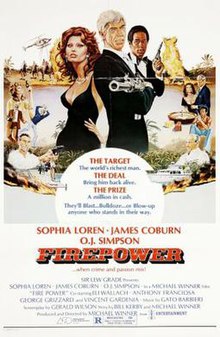
Sofia Costanza Brigida Villani Scicolone, known professionally as Sophia Loren, is an Italian actress, active in her native country and the United States. With a career spanning over 70 years, she is one of the last surviving stars from the Golden Age of Hollywood cinema.

James Harrison Coburn III was an American film and television actor who was featured in more than 70 films, largely action roles, and made 100 television appearances during a 45-year career.

A Special Day is a 1977 period drama film directed and co-written by Ettore Scola, produced by Carlo Ponti, and starring Sophia Loren and Marcello Mastroianni. Set in Rome in 1938, its narrative follows a housewife (Loren) and her neighbor (Mastroianni) who stay home the day Adolf Hitler visits Benito Mussolini.

Two Women is a 1960 war drama film directed by Vittorio De Sica from a screenplay he co-wrote with Cesare Zavattini, based on the 1957 novel of the same name by Alberto Moravia. The film stars Sophia Loren, Jean-Paul Belmondo, Eleonora Brown and Raf Vallone. It tells the story of a woman trying to protect her young daughter from the horrors of war. The story is fictional but based on actual events of 1944 in Rome and rural Lazio, during the Marocchinate.

Charles Bronson was an American actor. He was known for his roles in action films and his "granite features and brawny physique". Bronson was born into extreme poverty in Ehrenfeld, Pennsylvania, a coal mining town in the Allegheny Mountains. Bronson's father, a miner, died when Bronson was young. Bronson himself worked in the mines as well until joining the United States Army Air Forces in 1943 to fight in World War II. After his service, he joined a theatrical troupe and studied acting. During the 1950s, he played various supporting roles in motion pictures and television, including anthology drama TV series in which he would appear as the main character. Near the end of the decade, he had his first cinematic leading role in Machine-Gun Kelly (1958).
Lady Liberty is a 1971 Italian-French comedy film directed by Mario Monicelli, and starring Sophia Loren, William Devane, Gigi Proietti, Susan Sarandon, Danny DeVito and Edward Herrmann in his film debut.

Victor John Mature was an American stage, film, and television actor who was a leading man in Hollywood during the 1940s and 1950s. His best known film roles include One Million B.C. (1940), My Darling Clementine (1946), Kiss of Death (1947), Samson and Delilah (1949), and The Robe (1953). He also appeared in many musicals opposite such stars as Rita Hayworth and Betty Grable.
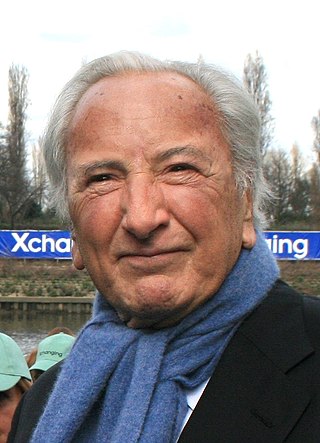
Michael Robert Winner was an English filmmaker, writer, and media personality. He is known for directing numerous action, thriller, and black comedy films in the 1960s, 1970s and 1980s, including several collaborations with actors Oliver Reed and Charles Bronson.

Days of Thunder is a 1990 American sports action drama film produced by Don Simpson and Jerry Bruckheimer and directed by Tony Scott. The film stars Tom Cruise, Nicole Kidman, Robert Duvall, Randy Quaid, Cary Elwes, Caroline Williams, and Michael Rooker. It also features appearances by real life NASCAR racers, such as Richard Petty, Rusty Wallace, Neil Bonnett, and Harry Gant. Commentator Dr. Jerry Punch, of ESPN, has a cameo appearance, as does co-producer Don Simpson.
Stirling Dale Silliphant was an American screenwriter and producer. He is best remembered for his screenplay for In the Heat of the Night, for which he won an Academy Award in 1967, and for creating the television series Naked City, Perry Mason, and Route 66. Other features as screenwriter include the Irwin Allen productions The Towering Inferno and The Poseidon Adventure.

Mel Stuart was an American film director and producer who often worked with producer David L. Wolper, at whose production firm he worked for 17 years, before going freelance.
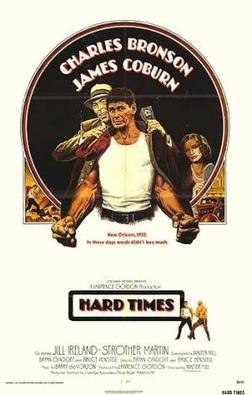
Hard Times, also known as The Streetfighter, is a 1975 action drama sport film marking the directorial debut of Walter Hill. It stars Charles Bronson as Chaney, a mysterious drifter freighthopping through Louisiana during the Great Depression, who proves indomitable in illegal bare-knuckled boxing matches after forming a partnership with the garrulous hustler Speed, played by James Coburn.

The Cassandra Crossing is a 1976 disaster thriller film directed by George Pan Cosmatos and starring Sophia Loren, Richard Harris, Ava Gardner, Martin Sheen, Burt Lancaster, Lee Strasberg and O. J. Simpson about a diseased Swedish terrorist who infects a cross-European train's passengers as they head to a derelict arch bridge which is liable to collapse.

The Mechanic is a 1972 American action thriller film directed by Michael Winner from a screenplay by Lewis John Carlino. It stars Charles Bronson, in his second collaboration with Winner, and Jan-Michael Vincent in the leading roles. The supporting cast features Keenan Wynn, Jill Ireland and Frank de Kova.
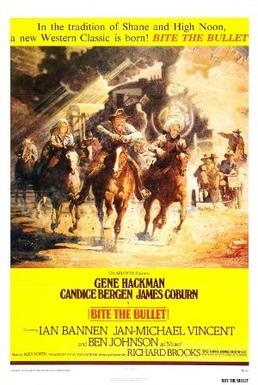
Bite the Bullet is a 1975 American Western film written, produced, and directed by Richard Brooks and starring Gene Hackman, Candice Bergen, and James Coburn, with Ian Bannen, Jan-Michael Vincent, Ben Johnson, and Dabney Coleman in supporting roles.
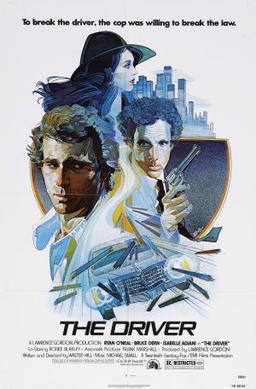
The Driver is a 1978 American crime thriller film written and directed by Walter Hill, and starring Ryan O'Neal, Bruce Dern and Isabelle Adjani. The film featured only unnamed characters, and follows a getaway driver for robberies whose exceptional talent has prevented him being caught. A detective promises pardons to a gang if they help catch him in a set-up robbery.
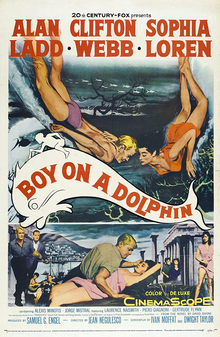
Boy on a Dolphin is a 1957 American romantic adventure film theatrically released by 20th Century-Fox. It is set in Greece and shot in DeLuxe Color and CinemaScope. It was directed by Jean Negulesco and produced by Samuel G. Engel from a screenplay by Ivan Moffat and Dwight Taylor, based on the 1955 novel of the same name by David Divine.
Firepower is a military concept rooted in the ability to direct a heavy weight of metal onto the enemy or enemy possession.
Bill Kerby was a screenwriter for several Hollywood films and television series who wrote and co-wrote the 1970s films Hooper and The Rose.

Vincent Beck was an American character actor who began his career as on stage. He was also a prolific film and television actor who acted in films such as Santa Claus Conquers the Martians (1964), The Spy in the Green Hat (1967), The Scorpio Letters (1967), The Pink Jungle (1968), The Bamboo Saucer (1968) and Vigilante (1983). He also appeared in numerous television shows including The Monkees, Get Smart, Daniel Boone, The Man from U.N.C.L.E., Bonanza, The Time Tunnel, and Lost in Space.
